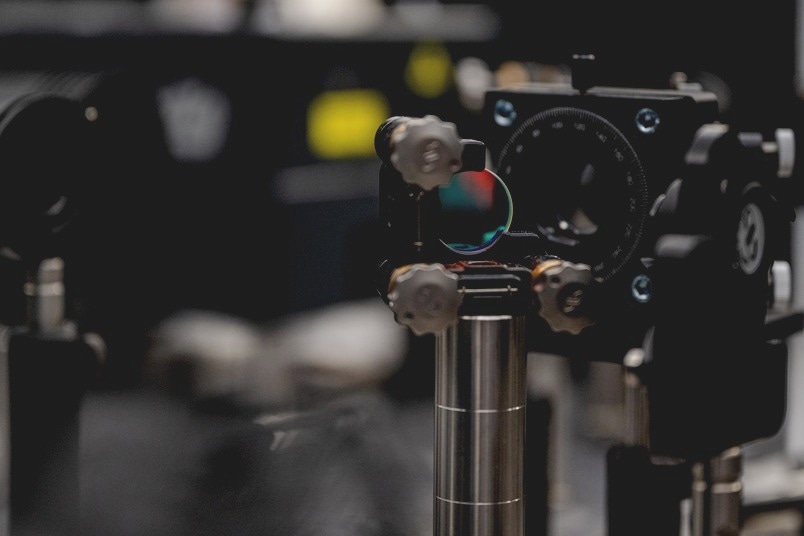A proton can be released locally in some molecules, so-called photoacids, by being excited by light. A swift change occurs in the pH value of the solution, which is significant for many chemical and biological processes.

The study was only made possible by the new laser laboratories in the ZEMOS research building, where all external interference signals are minimized. Image Credit: RUB, Marquard
However, it has not yet been determined exactly what takes place when proton emission occurs. This is precisely what researchers at the German Ruhr University Bochum’s Cluster of Excellence Ruhr Explores Solvation RESOLV have now been able to record in an experiment with new technology.
They noticed that a beating between the solute and solvent causes a brief quake that lasts for three to five picoseconds just before the proton begins to separate. They wrote about it in the March 16th, 2023 issue of the journal Chemical Sciences.
So Far, the Focus Has Been on Dye or Base
Pyranine, a fluorescent dye used, for instance, in yellow highlighters, is one of the most researched photoacids.
Despite a wealth of experimental studies, the process that is at the very beginning of proton detachment still remained the subject of controversial debate.
Martina Havenith, Professor Physical Chemistry II, Faculty of Chemistry and Biochemistry, Ruhr University Bochum
Havenith is also the spokesperson for RESOLV.
Only 90 picoseconds, however, are needed for the complete detachment procedure to take place. A picosecond is one-millionth of a millionth of a second.
The team was able to witness the change of the solvent, in this instance water, during this process for the first time, whereas earlier studies had primarily concentrated on the change of the dye after light excitation. A recently created method called “Optical Pump THz Probe Spectroscopy” was used to accomplish this.
Ultra-Fast Energy Transmission
Havenith added, “We were able to follow how there is an oscillation at the beginning, which then subsides subsequently. It is exciting to see that the solvent response that promotes excited-state proton transfer could be caught in the act.”
The water molecules in the region are restructured as a result of the initial rapid energy transfer that occurs in less than a picosecond, which prepares the region for the subsequent proton migration.
The new laser labs in the ZEMOS research building were integral in enabling the discovery. All external interference signals, such as those caused by electromagnetic radiation, temperature changes, and humidity variations, are minimized. Only then can the dye identify even the slightest vibrations in a water jet.
The accompanying simulations were developed by Martin Head-Gordon’s research group at the University of California, Berkeley. It is owned by CALSOLV, RESOLV’s sister organization.
The research was supported by the German Research Foundation (DFG) through the Cluster of Excellence Ruhr Explores Solvation, grant number EXC 2033-390677874-RESOLV, the European Research Council through ERC Advanced Grant 695437 (THz Calorimetry), and the Mercator Research Center Ruhr through a professorship from the Universitätsallianz Ruhr.
Journal Reference
Hoberg, C., et al. (2023) Caught in the act: real-time observation of the solvent response that promotes excited-state proton transfer in pyranine. Chemical Science. doi:10.1039/D2SC07126F